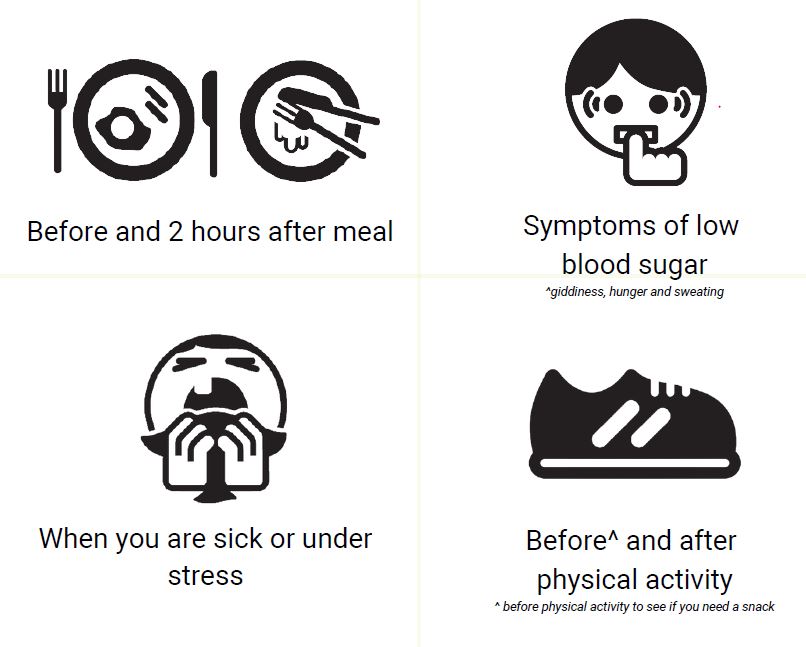5 ways to manage your blood sugar while working from home
Making the shift from being an in-office employee to one who works remotely can certainly be an adjustment. You may need to learn how to balance your own conference calls, create boundaries between your family time and late-night requests from colleagues when there’s no commute separating the spheres of your life and focus on that quarterly report when there are piles of laundry staring you in the face. Working from home presents a whole different set of challenges for people with diabetes.
Let’s face it; it’s easier to give in to stress snacking when your desk is positioned just feet from your kitchen pantry where comfort foods lurk. It’s harder to find the motivation to exercise when the couch is literally your office. And then there are emotions to contend with: feeling a loss of control and a sense of isolation can be even tougher for someone trying to navigate a chronic condition like diabetes.
The struggle is real, but you can get a handle on your diabetes and monitor your blood sugar levels while working from home with a few simple lifestyle tweaks. Here are five doable ways to manage your health — and your workday.
1. Master meal planning1&2
Taking time on the weekends to not only plan out but also prep your meals for the upcoming work week helps ensure that you’ll eat well-balanced, blood-sugar-friendly foods in weight-managing portions on even your busiest of days. One foolproof way to do this is to fill your plate with a balanced meal. Fill half your plate with non-starchy veggies such as salad greens, broccoli, cauliflower, or green beans. Fill one-quarter with a lean protein source including chicken, tofu, cheese or beans. Then dedicate no more than one-quarter to wholegrains.
2. Pencil in your mealtimes1
It’s not just what you eat that matters, but also when you eat. Enjoying meals and snacks on a schedule can help to keep your blood sugar level stable. Your goal is to avoid highs and lows with your glucose levels, so eating the right foods every three to four hours may help keep you steady as well as focused on your work.
3. Simplify self-monitoring
A blood glucose meter is an important tool in managing your blood glucose with confidence. Knowing your numbers can tell you how your body responds to certain foods, exercise, and even stress. You can then use the information to make dietary tweaks or to figure out ideal times for meals and snacks. It’s a quick and easy way to gain some understanding of your condition and to know whether you’re moving in the right direction.
Some smart times to check your glucose levels are:

While the idea of monitoring your glucose levels may seem overwhelming at first, it can be quite simple with the right solution. The
4. Take mini sweat breaks
You probably know the benefits of exercise to manage your diabetes. A recent study published in January 2020 reported that exercise decreased reliance on glucose-lowering medications for people with Type-2 diabetes and insulin4. And physical activity can help with weight loss and prevent diabetes-related complications such as cardiovascular disease.
But when your office is your home, finding the time and motivation can be tricky. Ministry of Health Singapore suggests at least 20-30 minutes of exercise at least three times a week of a combination of aerobic exercise, strength training, and stretching too3. If that feels too daunting with a busy work schedule, incorporate physical activity as part of your daily routine such as climbing the stairs instead of taking the lift, walk to the neighborhood supermarket instead of driving or taking public transport, drop down to the floor for push-ups. It all adds up — and gets you away from your desk.
5. Know when to shut it down
When there’s no clear boundary between your work and home life, it’s easy for your workday to extend into what should be your downtime. But here’s a reason to call it quits at a reasonable hour: Not getting enough shuteye can raise your blood sugar levels. In fact, a study published in September 2018 found that those with irregular sleep patterns were more obese and had higher levels of fasting blood glucose as well as blood pressure5.
To practice good sleep hygiene, power down an hour or two before you plan to hit the pillow (the blue light from your devices can keep you up), limit alcohol, which can interfere with the quality of sleep, and set regular bed and wake times.
Working at home has its challenges, but out-of-control blood sugar doesn’t have to be one. With careful planning, you can keep your workload and your levels in check.
1. Healthhub Singapore, https://www.healthhub.sg/live-healthy/838/healthy-eating-for-managing-di... (accessed Sept 2021)
2. Healthhub Singapore, My Healthy Plate https://www.healthhub.sg/programmes/55/my-healthy-plate (accessed Sept 2021)
3. Healthhub Singapore, Diabetes management; Stay Healthy and Exercise https://www.healthhub.sg/live-healthy/911/diabetes-and-exercise (accessed Sept 2021)
4.MacDonald CS, et al. Dose-response effects of exercise on glucose-lowering medications for type 2 diabetes: A secondary analysis of a randomized clinical trial. Mayo Clin. Proc. 2020 Mar;95(3):488-503. doi: 10.1016/j.mayocp.2019.09.005. Epub 2020 Jan 30.. https://pubmed.ncbi.nlm.nih.gov/32007295/
5. Lunsford-Avery, J.R., Engelhard, M.M., Navar, A.M. et al. Validation of the Sleep Regularity Index in Older Adults and Associations with Cardiometabolic Risk. Sci Rep 8, 14158 (2018).https://www.nature.com/articles/s41598-018-32402-5
